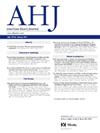Obicetrapib Does Not Accumulate in Adipose Tissue: Results from Studies in Man and Non-Human Primates
IF 3.7
2区 医学
Q1 CARDIAC & CARDIOVASCULAR SYSTEMS
引用次数: 0
Abstract
Background and Aims: Previous CETP inhibitors were highly lipophilic with logP of 7.2–9.2, leading to adipose tissue accumulation in the case of anacetrapib. In contrast, obicetrapib is characterized by a logP of 4.9 and terminal half-life of ∼135 hours. Studies in monkeys and humans were undertaken to determine the definitive elimination of obicetrapib.
Methods: Obicetrapib was administered at doses up to 50 mg/kg/day in cynomolgus monkeys. A phase 1 trial administered doses of 1-25 mg to healthy humans, and 3 placebo-controlled, phase 2 studies in dyslipidemic humans administered obicetrapib (on background statin therapy) at 5 or 10 mg/d for 8 weeks (ROSE; n=120), 10 mg/d monotherapy or with ezetimibe for 12 weeks (ROSE2; n=119), and 2.5, 5, or 10 mg/d for 8 weeks (Japan; n=102). Plasma concentrations of obicetrapib were measured during the studies and post-treatment.
Results: In monkeys, obicetrapib was not detected in any adipose tissue. A period of 13 weeks was sufficient for complete elimination from systemic circulation. The terminal half-life of obicetrapib was 121-151 hours in healthy humans. Across phase 3 studies, the median plasma concentration of obicetrapib reached 384-472 μg/L and decreased by up to 93-99% by 4 to 15 weeks post-treatment.
Conclusions: Obicetrapib shows no evidence of accumulation in adipose tissue or delayed elimination from the systemic circulation supporting once daily, chronic dosing of 10 mg.
求助全文
约1分钟内获得全文
求助全文
来源期刊

American heart journal
医学-心血管系统
CiteScore
8.20
自引率
2.10%
发文量
214
审稿时长
38 days
期刊介绍:
The American Heart Journal will consider for publication suitable articles on topics pertaining to the broad discipline of cardiovascular disease. Our goal is to provide the reader primary investigation, scholarly review, and opinion concerning the practice of cardiovascular medicine. We especially encourage submission of 3 types of reports that are not frequently seen in cardiovascular journals: negative clinical studies, reports on study designs, and studies involving the organization of medical care. The Journal does not accept individual case reports or original articles involving bench laboratory or animal research.
 求助内容:
求助内容: 应助结果提醒方式:
应助结果提醒方式:


